Driving to Europe: tips & tricks
21 December, 2016 Ukraine is soon expected to have a visa-free travel agreement with the Schengen countries. This year I mostly did nothing, but drive all over Europe, basically living in my Kangoo at times. Throughout the trips I collected a few tips and tricks that were not so obvious for me given Ukrainian driving perspective. I don't pretend to offer exhaustive insight and welcome pull requests with corrections and extras. Hopefully somebody will find it useful. All illustrations are pictures I took myself in 2016.- Border
- Tanking
- Shopping and staying online
- Parking
- Highways
- Urban driving
- Individual countries
- Useful tools
Border
There are 2 types of control from each of the counties at the border: a passport and a customs one. The passport control checks you and your passengers, but they may ask you to open the doors and the boot of the car to make sure there are no extra people onboard. The customs can ask you to show the contents of a bag of their liking so pack everything in the way that is easy to reach. The European Union countries have a ban on import of animal-borne food products (meat, cheese, dairy, though even milk chocolate in theory as well) coming from extra-union manufacturing and you may be asked to destroy them. The countries of Schengen agreement lack the mandatory passport control. The countries of European Customs Union lack the customs control. Therefore on Swiss-French border you will be only subject to the customs control and on Slovene-Croatian one only to the passport one. The lanes in the border control posts are divided to green and red channels. Sometimes there is a separate lane for the holders of specific passports or one dedicated to local border traffic. You don’t want to stand in the latter one because it’s very slow.
Extra documents and equipment you need to have compared to what you need in Ukraine already:
- A reflective vest
- A medical insurance policy for the trip duration
- A “Green Card” civil responsibility insurance policy for the car
- A bank statement for the money available not older than 7 days, cash, other confirmations of solvency and the reason of the trip
- A repair set of bulbs and fuses (they can ask for it in theory, never happened to me)
- A definite answer when asked about the destination and the goals of the trip
Cars with visually apparent malfunctions may be denied entry.
Tanking

The gas stations in Europe seldom have assistants, therefore practice pumping your fuel on your own before you go. When you detach the pistol, the counter should be at zero. In stations where you pay to a person at the exit gate you might need to wait before the person who tanked on the same place before you pays. You generally fill first and then go inside to pay unlike Ukraine. Alternatively there is often an option to pay by card right on the spot. In this case, you use the machine to authorize the payment on your card, and proceed to fill on success. This is the only option for unmanned gas stations and ones operating out of office hours. Generally the machine locks about 100 € in advance on your card and releases the extra cost after you’re done filling, so make sure your card has enough money available. I’ve seen a self-service machine accepting cash, but it did not return the change.
Highway fuel is always more expensive due to certain monopoly they enjoy. Gas stations are also spaced much more sparsely than in Ukraine, so distances of 50 km order between the stations are not at all rare. Conversely, large hypermarket chains (Auchan most importantly, but also Tesco, METRO, Intermarché) often have their own discount gas stations under their brand. Their fuel is one of the cheapest and is of acceptable quality in my experience. It might be wise to look for such stations near your intended path in advance. On the flip side, they are usually very crowded.
Shopping and staying online
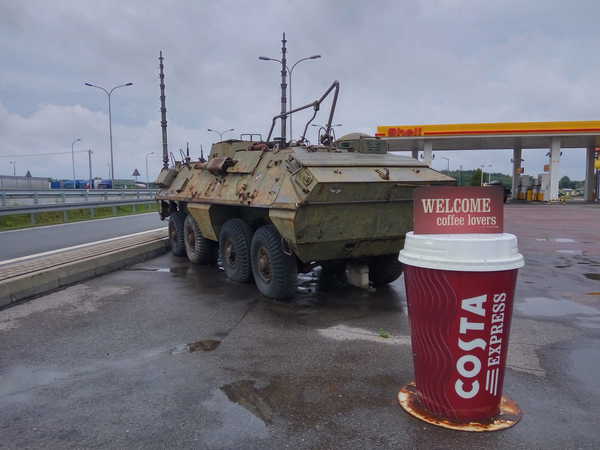
Ukrainian cards are usually accepted. If possible, get a card with a chip. While most of the terminals in retail shops accept basic chipless cards, more often than not the self-service terminals and offline locations such as toll booths would not. Contactless payment can be very convenient and is becoming widespread, although not a requirement except some corner cases such as German highway toilets. Certain card terminals would allow you to pay in the native currency of the country you are in or in the card’s own currency. The second option makes the merchan’s bank do the conversion and the rates are always bad, therefore always pay in the country’s currency whenever possible relying on your own bank to covert money.
The cheapest communication option is to buy a local SIM card. EU is set to remove the roaming charges for inter-union communication but they are already quite low thanks to this policy. If you need to have a fixed number with free incoming calls, there is TravelSim and its several competitors. The mobile Internet is quite expensive on such cards though. Internet becomes progressively more restricted as you go West. If you want to eat and chill out online, better check the connection and whether you can authenticate on your phone before committing to a restaurant or gas station. When you drive outside of the highway, I suggest looking for chain fast foods such as McDonald’s, KFC, Burger King et al. Sure, they are not authentic and the food is not worth it, but they are easy to find on offline maps, have easily distinguishably logos and are guaranteed to have hot drinks, parking, toilets and Internet. You know the drill.
Parking
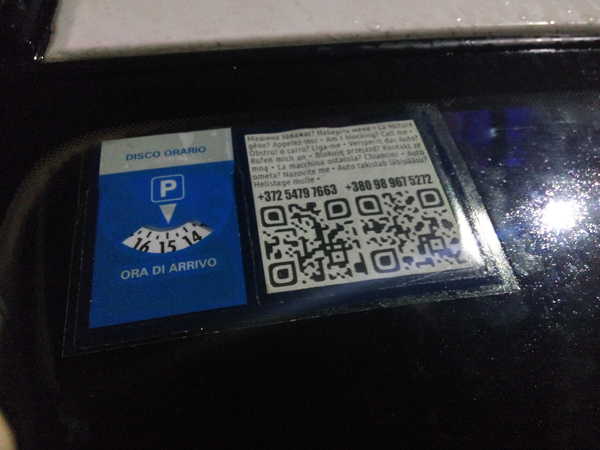
Parking within the city center limits is usually paid and very regulated, although this varies country to country. As a rule, paid parking on the street is free between 19:00 and 8:00, on weekends and state holidays. Do check the indications on the parking machine though since some rare places are never free. The machines usually accept coins only, so make sure you stack on them in advance. Payment rolls over to the next paid period, so if you arrive at 18:00 on a 1 €/hour spot and pay 2 €, the ticket will say your parking ends at 9:00. This also allows to pre-pay the parking for the morning if you arrive during the free time already.
Certain countries use limited time parking with special parking discs. The idea is that you set the disc to the time of your arrival so that one can check that you are not overstaying. The discs can be separate devices that you put on your dashboard or made as stickers for the windshields. Generally you can obtain a disc on a gas station or in a car parts shop. The one pictured above was bought for 1 € in a shop near Italy-Slovenia border in Gorizia. You can identify time-limited parking with a P sign showing an icon of parking disc. More often than not such places also have blue road markings.
Cities often have Park-and-Ride systems where you can park the car for a discount price or completely for free as long as you switch to public transport and present a validated ticket at exit. Details vary between cities and countries. To prevent abuse such parkings within the city almost never allow you to park overnight, although ones situated closer to the highway can often be just nothing but cheap parkings near the public transport station without ticket conditions.
Highways
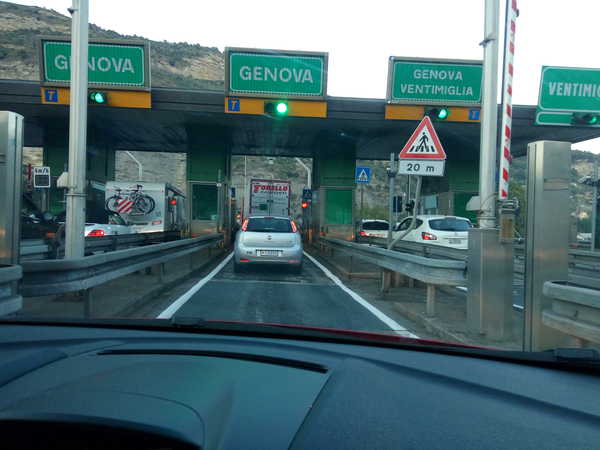
Highways can be free or paid depending on country in question. Certain paid highways require you to buy a special sticker called a vignette which allows unlimited access whereas others make you pay for the distances you cover. The later can be either organized as regular toll booths with fixed payment or alternatively make you take a ticket when entering the highway and calculate your payment when you exit. Toll booths announce which payment methods they accept and are color-coded, though the designation varies between countries. In some countries you can be let out of the highway without paying in case when your card does not work. You are given a receipt with the code to pay your debt online within several days during which the highway operator won’t take legal action. That being said, you will lose lots of time at the booth explaining things.
You are not allowed to stop on the highway except for specially designated areas. Most of the time there is an emergency lane or special emergency spots. You should always try to keep yourself in the rightmost lane, especially since there are no options to turn left anyway. Lanes that ultimately exit or change direction on the road forks are distinguishable by road surface markings.
Stations offer fuel, restaurants, parking, Internet, toilets, sometimes shops, hotels and other facilities. The signs indicating an exit to a station usually announce the distance to the next one so that you can make up your mind whether you need to stop or can go further. If you must sleep in the car on the station parking, nobody will mind.
Vignettes

Some countries collect toll with vignettes you buy and stick to your windshield. You can buy vignettes at most gas stations within the countries and in adjacent countries close to the border. Vignettes usually have variable validity time so you can pick one that suits your journey duration. Vignettes are non-transferrable and tear easily when removed, so make sure you stick it correctly on the first try. Vignettes must be glued directly on the glass with their own glue, tinkering such as the the use of glue tape is illegal and high fines apply. The glue vignettes leave after disposal can be removed with organic solvents, such as nail polish cleaning liquid or acetone. Yearly vignettes are usually valid from December of the year preceding the vignette year to the January of the following year inclusively.
Telepass
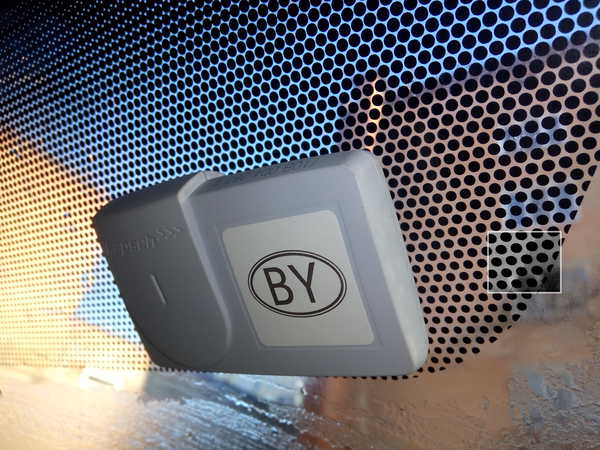
Countries which collect distance based toll often offer an option to pay by means of a radio beacon device, which settles the charges at the toll booth automatically without the need to stop and pay with cash or card. I will collectively call such devices telepasses based on the Italian designation. Depending on the country and the selected pacakge telepasses can be anonymous, tied to the car or the owner, pre-paid or for the owners of a SEPA-based bank account there is an option to delay the payment to the end of the month. Passing the toll booth with telepass removes the need to take the ticket. Telepass allows to considerably reduce time spent in toll booths and makes currency or invalid car problems vanish. Often it also lets you cut queues because of separate gates reserved for telepass owners.
The telepass mount is glued on the windshield while the device itself is detachable. You will generally be also given a metallized bag to store the device in such a way that it won’t be activated by accident. All the devices I held in my hand were made by the Kapsch company. The mounts are more or less universal: a Belarussian mount can accept a Polish device while an Italian one accepts a French device. Telepass can operate without the mount, you can hold it with your hand in the correct place while passing the booth. This is handy when you use your own device on somebody else’s car or to test the correctness of the mount position.
The place where to put the mount should be selected very attentively considering your car’s pecularities. The problem is that the automotive glass is often metallized in order to cut the ultra-violet and the infra-red radiation. Telepass communicates with its reader device on the exact same frequencies that the glass filters. This is why the car producers leave certain special areas free of metallization. They are usually found near the interior mirror. In my car it’s possible to see these zones visually if you pay attention. The telepass merchant can provide you with a tool to check your windshield, but one shouldn’t rely too much on it. Passing the booth is the ultimate test. You should however only try this on the booths which have a barrier so that you don’t get into trouble or be forced into paying a fine.
Urban driving
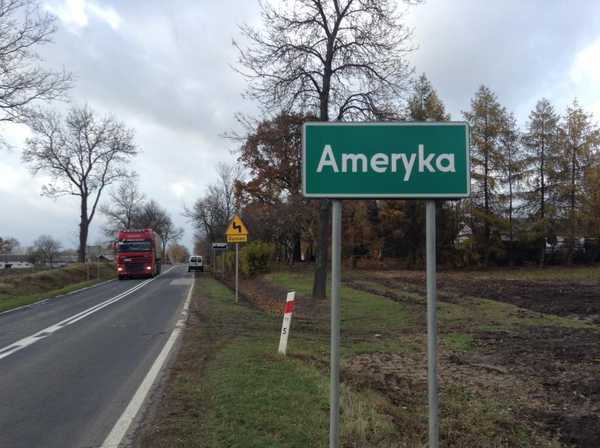
The boundary of the urban zone where you should slow down is shown either with white or yellow signs as in Ukraine or with a special white sign showing the limits of built-up area depending on the country in question. There is generally no speed allowance and you can often find an electronic panel announcing their reading of your speed so that you don’t forget to behave before the actual speed radar catches you.
Many small town junctions have priority to the right without due warning. In the Western European countries the overhead lane indication signs are very rare, so you must rely on the surface markings to determine the correct lane. The yield and stop sign are also sometimes missing in favor of dashed line and wide solid line markings perpendicular to the driving direction respectively, so pay attention on the road.
Drivers generally do not show the left turn signal when entering a roundabout. Briefly switching to high beams showing that you yield voluntarily and flashing emergency lights in gratitude are generally understood and well used just as in Ukraine. Western countries drivers usually thank you by open palm gesture, but the emergency lights are safe to use and won’t confuse people either. Some, truckers most importantly, alternate between left and right turn signals instead.
Individual countries
Poland
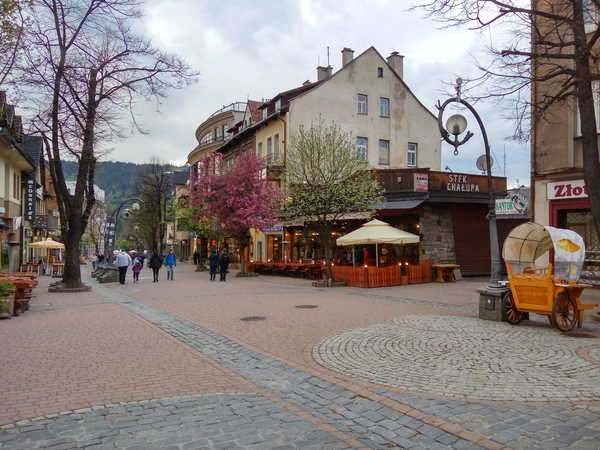
In Poland the left arrow of a traffic light section does not allow for U-turn. Only section arrow pointing downwards or its combinations with other arrows do. This only applies to traffic lights, the overhead lane indication signs normally allows for U-turn where ever a left turn is permitted. There is however a special indication of U-turn at times.
Poland has variable urban speed limit. It is 50 km/h during daytime and 60 km/h at night. Also the 140 km/h highway speed limit is the highest in Europe (excluding the German unlimited highway). The highways are of superb quality. There is a telepass called ViaToll available at certain gas stations. Not all toll booths are equipped with the hardware for telepass so you still will need to pay in person most of the time. Euros as well as złotys are acccepted.
Currency exchange offices are called kantors. Hryvnia usually have an extremely bad rate, so it’s better to change before the trip.
Belarus
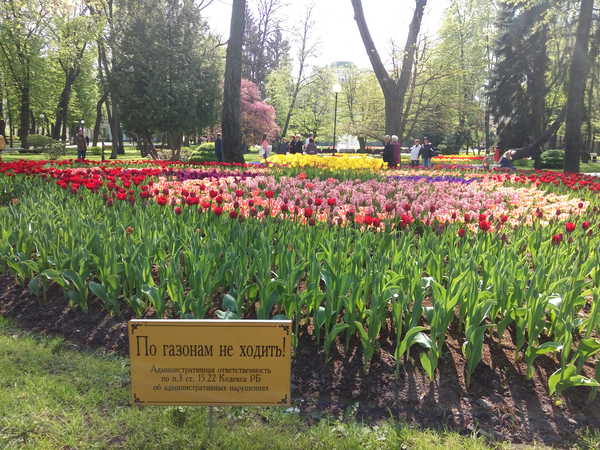
Belarus uses a mandatory pre-paid telepass system for foreign cars except for Customs Union. It is furthermore non-transferrable between vehicles. There are no toll booths and you are supposed to pass the control points at full speed. At the time of purchase you are given a device to measure your windshield permeability, but the instruction movie is misleading. Make sure you check the output in both outside in and inside out directions. Passing the controls with a malfunctioning device gives a 100 € fine and police is very quick to react. Of course you can’t know if you set things up correctly before trying to pass and unlike gated booths there is no safe option to try. BelToll ignores any claims for fine refunds citing that you have to know your car and it’s none of their problem.
It’s quite hard to find a decent roadside restaurant. Gas stations usually have some low-quality microwaveable pies and this is about it. If you want to have a good meal, you need to exit the highway and go to some city. This might not be very objective, but based on my experience going from Homel to Vilnius.
Hungary
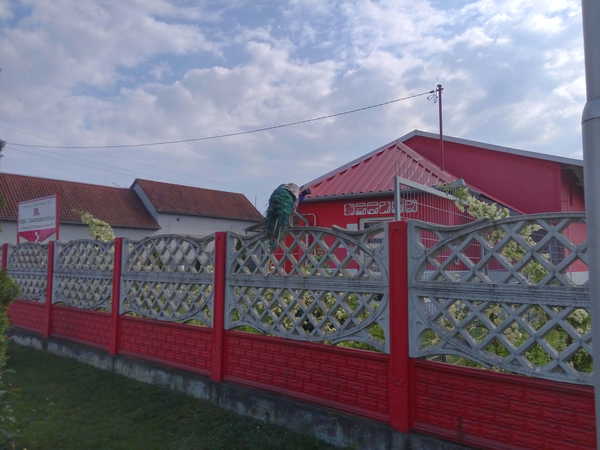
Hungary has an unique toll payment system. An “electronic vignette” is tied to the car’s license plate and can be purchased online or at the desk of the fuel stations. The cameras are matching the plates visually and control the payment presence. Therefore it’s advisable to keep the license plate clean. The gas station also have a self-service machine for electronic vignettes, but as far as I can tell those are only for the lorries.
In the beginning of August, Hungary hosts a widely known musical festival called Sziget. This causes hostel and hotel prices to skyrocket in Budapest to astronomical values.
Estonia
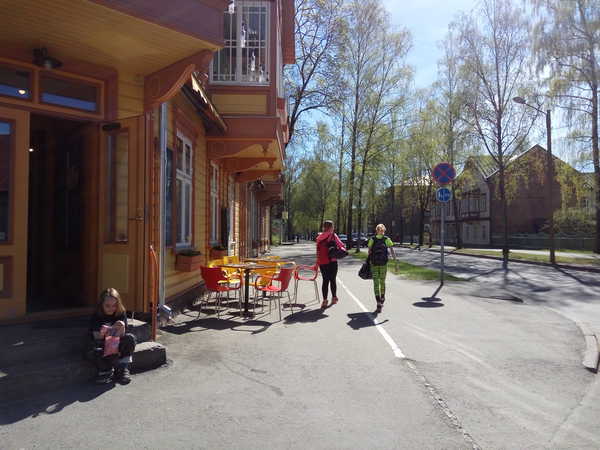
Estonian parking can be paid by sending an SMS with your license plate and the area code on a special number as well as with conventional coins. The cost of the parking would then be included in the mobile bill. This only works with Estonian phone numbers though, even TravelSim is not connected to this system.
Slovenia

Slovene highway stations have coin paid toilets which give a receipt that refunds the total cost at the fuel station counter. This notably does not work at the station cafés and restaurants. Stations often have a Marché restaurant which offers full three course meals at funny prices.
The road from Zagreb to Maribor is being upgraded to highway as of end of 2016 and is quite painful at night due to narrow lanes, switching directions and construction artifacts.
Croatia
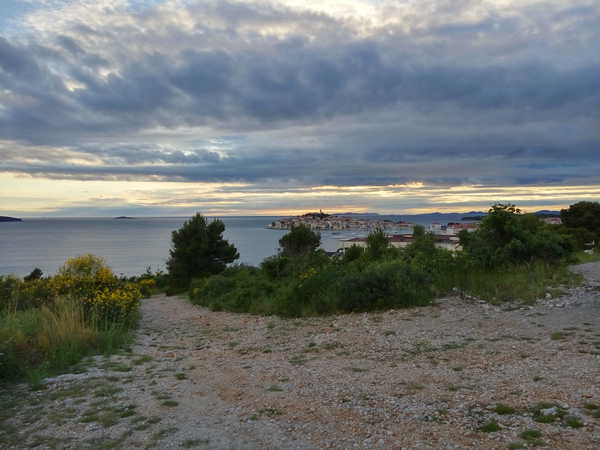
Croatian urban zone markers are totally Ukraine-tier, they are often placed well ahead or hidden in the bushes. To complicate matters, sometimes you can spot speed limit changes of over 50 km/h while driving out of the corner. I’ve once seen a drop from 90 km/h straight to 30 km/h without intermediate signs placed in advance. There is apparently a +20 km/h allowance rule to cushion this, but as a foreigner I advise you not to rely on this too much.
Croatian highway toll is discounted 10% if you pay buy card and up to 23% (33.5% off-season) if you pay with telepass which is called ENC (ETC in English). You can fill up the telepass at the toll booths, via SMS from Croatian number or online. It is notoriously hard to buy the actual device itself though, as sales points are often out of service randomly and some have very narrow office hours. Possibly the best bet is to try getting to Zagreb office in working hours. There also are other payment options, but they are mainly targeted at the resident drivers. Istrian peninsula has a separate highway network and is thus not connected to the ENC system.
Croatian currency is Kuna, it’s value is around 7.5 Kn to 1 €. I’ve seen this being abused at Lukoil gas station near Slovene border by putting a leading zero digit to give the impression of 0.89 €/l fuel while in reality it’s 1.2 €/l.
Bosnia and Hercegovina
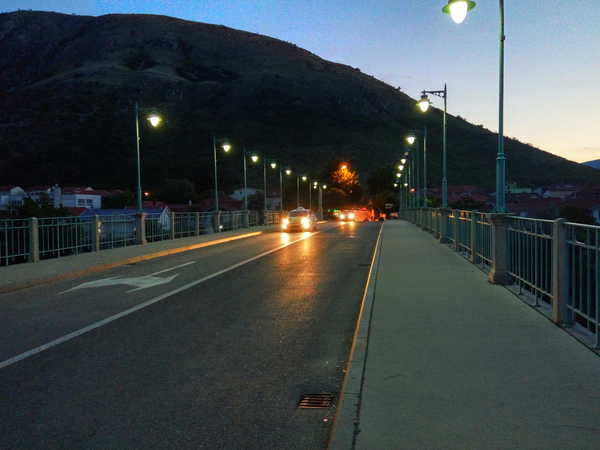
Bosnian convertible mark is pegged to Euro and has a constant exchange rate of approximately 2 Mk for 1 € (1.95583 to be precise). Thus it can be thought as Euro in disguise with twice the nominal and there is no need to compare rates at exchange offices. Coin and banknote design varies between Federation of Bosnia and Herzegovina and Republika Srpska, but both are equally and universally valid. There is no border between the entities either, so very little difference from traveller’s perspective.
Bosnian highway network is at very early stage as of 2016, so most of the roads are very slow compared to the small distance they seemingly cover due to mountainous geography. It is advised not to go into the wilderness off trail too much given the abundance of post war landmines.
Bosnia has the cheapest fuel in the Balkan region.
Serbia
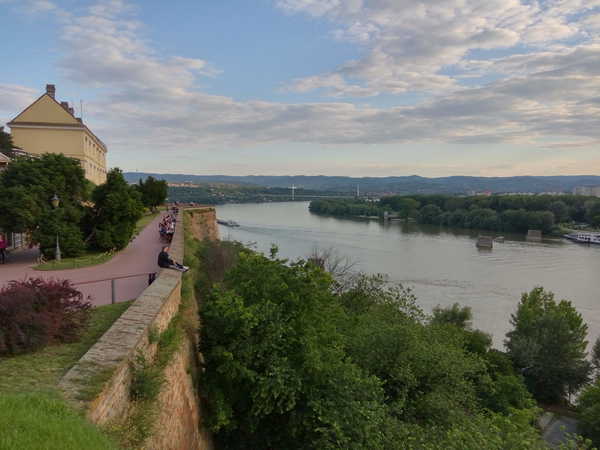
Serbian highways are very cheap given their quality. City centre parking has a phone payment system similar to Estonia when you send and SMS with your license plates and the area code when your parking starts and ends with payment included to the mobile bill. Apparently you need a Serbian SIM though, I’ve never tried to use system yet. Regular parking machines are present, but often defunct.
Ukraine does not recognize independent Kosovo and Kosovo by its own perspective is not a member of Green Card system. As a result, the Green Cards are not valid there so you need to buy a separate insurance near the border. Serbia permits entry, at least from the checkpoints it controls, but the border guards will overstamp any marks made by Kosovars.
Germany
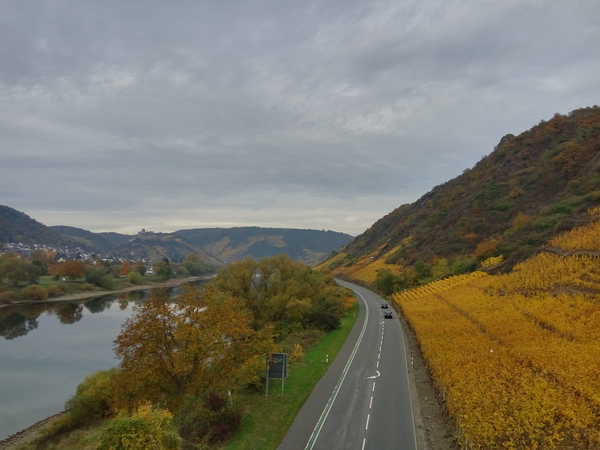
German highways are currently free, although there are plans to introduce vignettes and refund their costs for the local drivers. Most straight parts of the road indeed have no speed limit, however traffic jams and roadside works are common. Highway stations often have paid shower. Virtually all the toilets are served by the Sanifair company and are paid. The cost is 0.7 €, but they give out a 0.5 € receipt which is usable on the gas station and at any restaurant or fast food within the highway stations. The machine accepts coins and contactless payment cards. Internet is usually served by Telekom and offers one free hour per day. However, this limit is not synchronized across the stations and is easy to trick.
The city centers in Germany have an area where it is only possible to drive with a special sticker. The sticker is given out by the local technical control and costs 10 €. Its color is determined by the emissions class (EURO). Green stickers are free to enter anywhere, yellow ones are more restricted. Before entering a considerably big city, I advise you to check the map of its Umwelt-zone. Diesel engines are discriminated way more than the gas ones. My car is little over 10 years old and I already can’t drive almost anywhere in the cities.
German parking and stopping prohibition signs have an unusual form for start and end markers. The leftwards arrow on the sign marks the start, arrows in both directions mark the continuation while the rightwards arrow marks the end respectively. Parking on the edge of opposing lane on two way streets is prohibited due to safety reasons.
Switzerland

Swiss vignettes only have a yearly option so they are the most expensive for short term transit. However they turn out to be at the same time most cheap given the number of validity days. Most fuel stations are closed at night, so if for whatever reason you must drive on the highway after the midnight, better buy a vignette in a neighboring country in advance. Even parking garages may sometimes lack the option to pay by card.
Parking system in Switzerland is extremely confusing. Usually the white parking spots are paid during the day and are situated near the parking machines. The blue spots and zones allow for free parking with a disc within certain time limit (1 hour usually) between 8:00 and 11:30 as well as between 13:30 and 18:00 (7:00-19:00 at days off work), unlimited otherwise. The limitations might not be applicable for local cars displaying a special sticker. Yellow spots are private or reserved, usually for shop deliveries, postal service, police and so on. The legend tells about the red zone allowing the tourists to park for 15 cars with a special document… I guess you got the idea. This all has local varieties due to the high degree of decentralization. Even locals sometimes may fail to explain how to park properly. Google up the canton you wish to go to before going.
Switzerland does not have a mandatory passport control with EU because of Schengen. There is a customs control however. This is why you still can be stopped at the border, especially with foreign license plates. Usually this is limited to asking where do you head though, especially at night. Some border crossings are simply unmanned which formally makes them green corridors in their entirety.
Italy
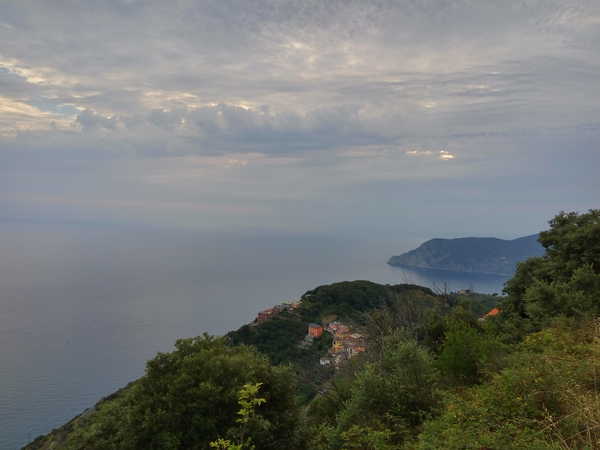
Italian highways are very expensive and offer less considerably functionality at the station compared to France. Lack of Internet connection is especially common. Sometimes there is an authentication page requesting you to enter an Italian, German, French or for whatever reason Greek phone number. There is an option to authenticate for free with a credit card and any phone number, yet Ukrainian and Estonian ones are simply not recognized as valid input. Autogrill network offers good food, however they close quite soon in the evening. Also the direction indications are sometimes contradictory. There is a telepass with both post-payment with a SEPA bank account and a prepaid option which costs 49 €. Telepass-reserved toll booths sometimes lack barriers, it’s very important not to go there by mistake.
Roads outside highways are incredibly slow due to the number of roundabouts. One can easily spend a whole day to cover 500 kms. In December, the Po river valley is covered with thick fog. During the foggy times, the 50 km/h limitation is in place. The respective signs have a in caso di nebbia (“in case of fog”) marker. The fog is dispersed a little in the cities. So one can see Milan for instance. But a few kilometers out on the road you will face a white wall. Learn in advance how to turn your rear fog lamp on.
Italian city centers have the limited traffic zones. The exact rules are set on a per-city basis. The entry signs have too much information to read and understand while driving. In case of tourism it’s better to avoid city centers altogether at least during the day. Alternatively study the rules for specific city beforehand.
France
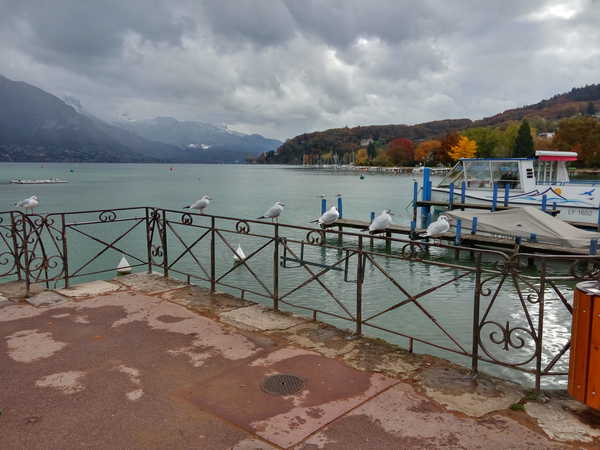
French highways are also very expensive, but they are generally equipped with comfortable stations featuring 24-hour Internet, free shower, microwave oven most of the times, tire pressure pump machine etc. French highways often also announce the availability of parkings ahead and the fuel prices on the station within 100-200 kms. There are several telepass options. In the case of post-payment on the SEPA-account the device itself is free, although you are required to deposit 30 €. The usage fee is 2 € for the most tourist oriented formule temps libre per month of usage (free if no highways were taken in the given month). There is a a joint offer with BlaBlaCar to offset the telepass payments on the condition of doing 50 kms of BlaBlaCar with passengers over Vinci Autoroutes network during the month in question. Telepass also can be used to pay the covert parking in Vinci network.
Important sign parkers are: par temps de pluie (“during the rain”) and rappel (“reminder”). For reasons unknown they are rendered in text despite the fact that Vienna convention has analogous ones available.
In Nice one can buy a card allowing paid electric car rental as well as free charging for the own electric car in the Auto Bleue network for 25 € (one time). Given the charge time this can be used as a de-facto free parking that is always available since the stations are all over the city and the parking spot is reserved for charging EVs.
Useful tools
- Carsharing site for joint travels (in case you live under a rock)
- Highway toll calculator
- Road, highway and limits information by country
- Road elevation profile calculator, useful for bikes and EVs
- Cheap car rental search
- Peer to peer car rental, something like AirBnB for cars
- Ukraine’s west borders queue length updates

